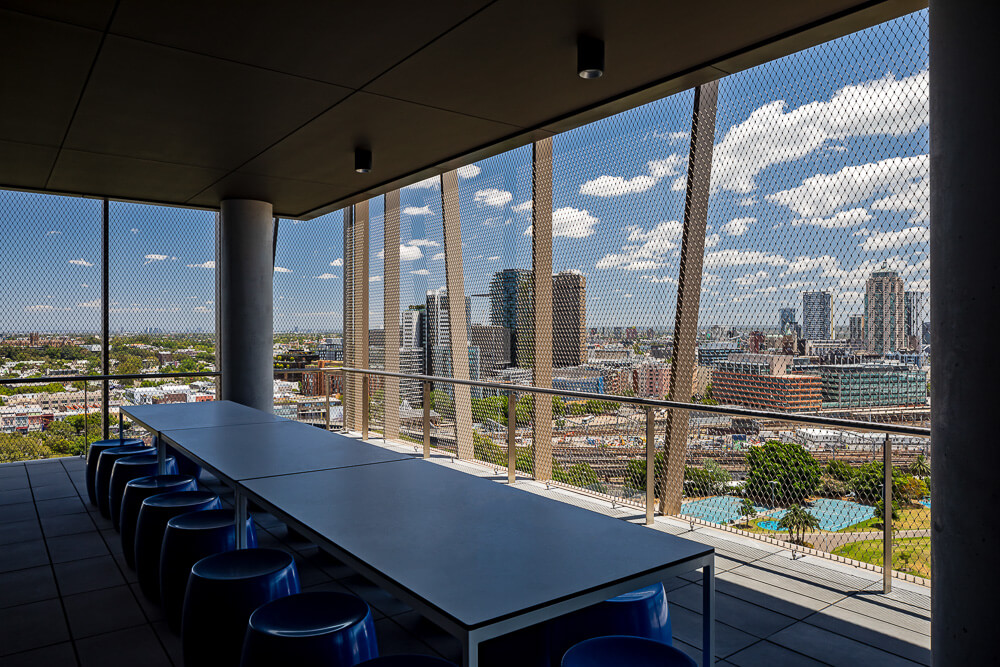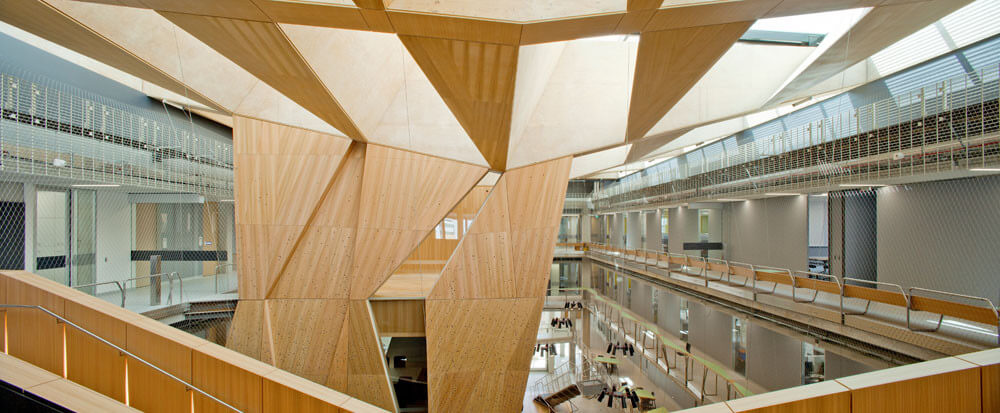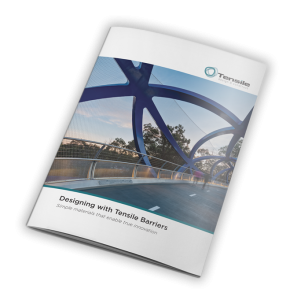Webnet and stainless-steel barriers are growing in popularity for a range of indoor and outdoor applications.
One of the key advantages of these barriers is that they are remarkably low maintenance, making them especially cost-effective over the long-term.
Why are Webnet and stainless-steel barriers low maintenance?
The materials used for Webnet mesh and cable barriers are made from marine-grade stainless steel. Stainless steel is more durable than, say, galvanised steel – a material often used in Chainlink fencing and Weldmesh.
Galvanised steel has an outer coating of zinc which helps protect it against corrosion for a certain length of time. Eventually this process wears off however, which can lead to rusting and corrosion.
Stainless steel on the other hand has inbuilt corrosion-resistance as it contains chromium, an element that reacts with oxygen to form a protective layer.
At Tensile, we use 316-grade (marine-grade) stainless steel. Marine-grade steel is even more resistant to rust than regular stainless steel, as it contains molybdenum which protects against the effects of sea spray. Barriers and facades made from 316-grade stainless steel can last for 25 years.
That said, robust materials are only one element. It’s also crucial that the barrier undergoes precision engineering, correct tensioning and professional installation to ensure it doesn’t fall over at the first hurdle!

Maintenance inspections
After installation, a Webnet or stainless-steel cable barrier often requires no more than an annual inspection to check that everything is as it should be.
Depending on the situation, a maintenance inspection may involve checking for:
- Damage and corrosion to load bearing structures
- Kinks, fraying, or breaks in wire ropes
- Loose nuts or other parts
- Compression points and tensioning
- Any cleaning requirements due to accumulated dirt or dust.
If a problem is found it will need attending to, but more often than not. there is no need for any repairs.
Case example: Melbourne School of Design
The Melbourne School of Design’s full-length atrium barrier extends over five levels. It provides fall protection and anti-throw prevention while being light and transparent in appearance.
As well as 1,200m2 of Webnet mesh, the barrier is made up of 4kms of supporting cables, 1,500 metres of stainless-steel tubing, and an array of fixings and other components.
This was a complex project that required a lot of consultation, innovation, and 3D modelling to get right. It was certainly the most complicated installation we had done up to that point!
Despite that however, the barrier has lasted for years with almost no maintenance needs. In the 10 years or so since we installed the barrier, we have only ever had one issue that needed fixing. It was solved in about five minutes!
This demonstrates how a well-engineered barrier made from high-quality stainless-steel materials can end up saving you time and money over time, while continuing to look great.
Contact us about Webnet and stainless-steel barriers
If you’d like to learn more about commercial Webnet and stainless-steel barriers, please get in touch!






































